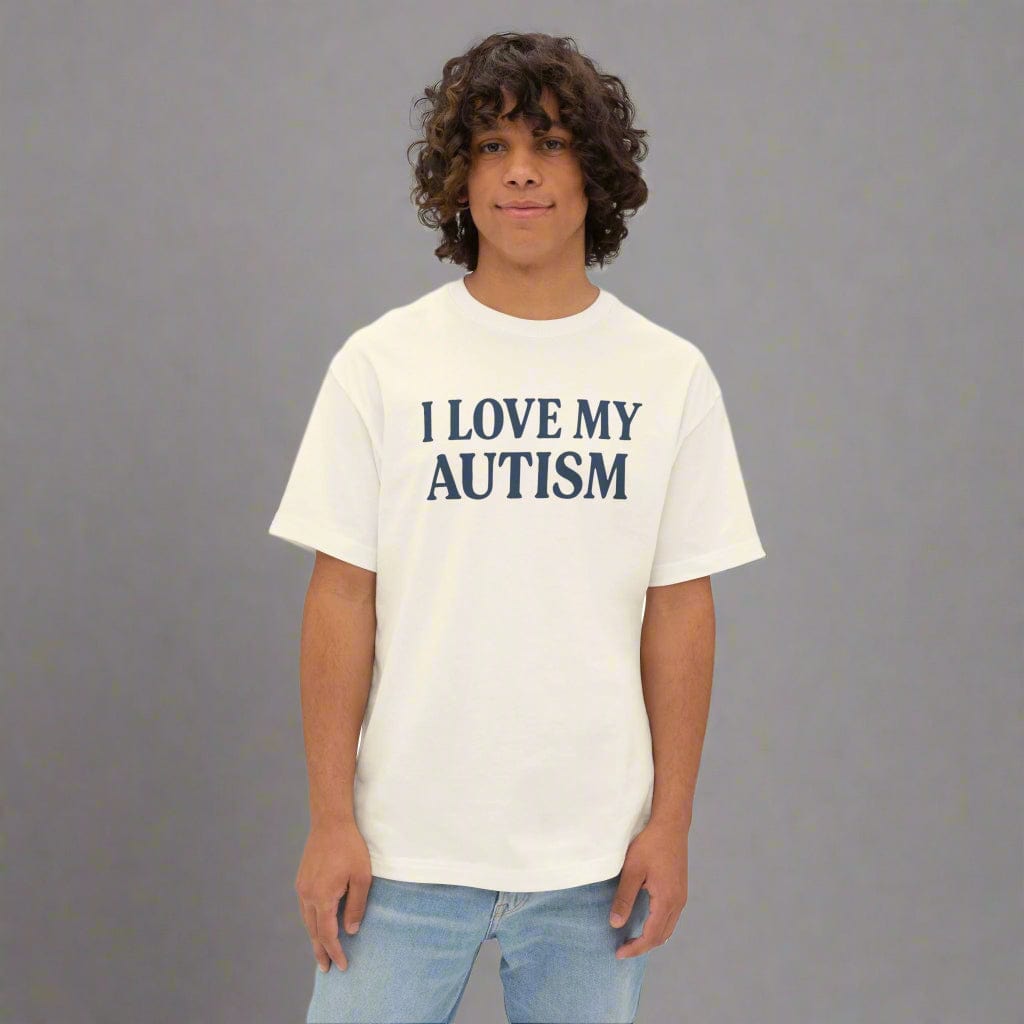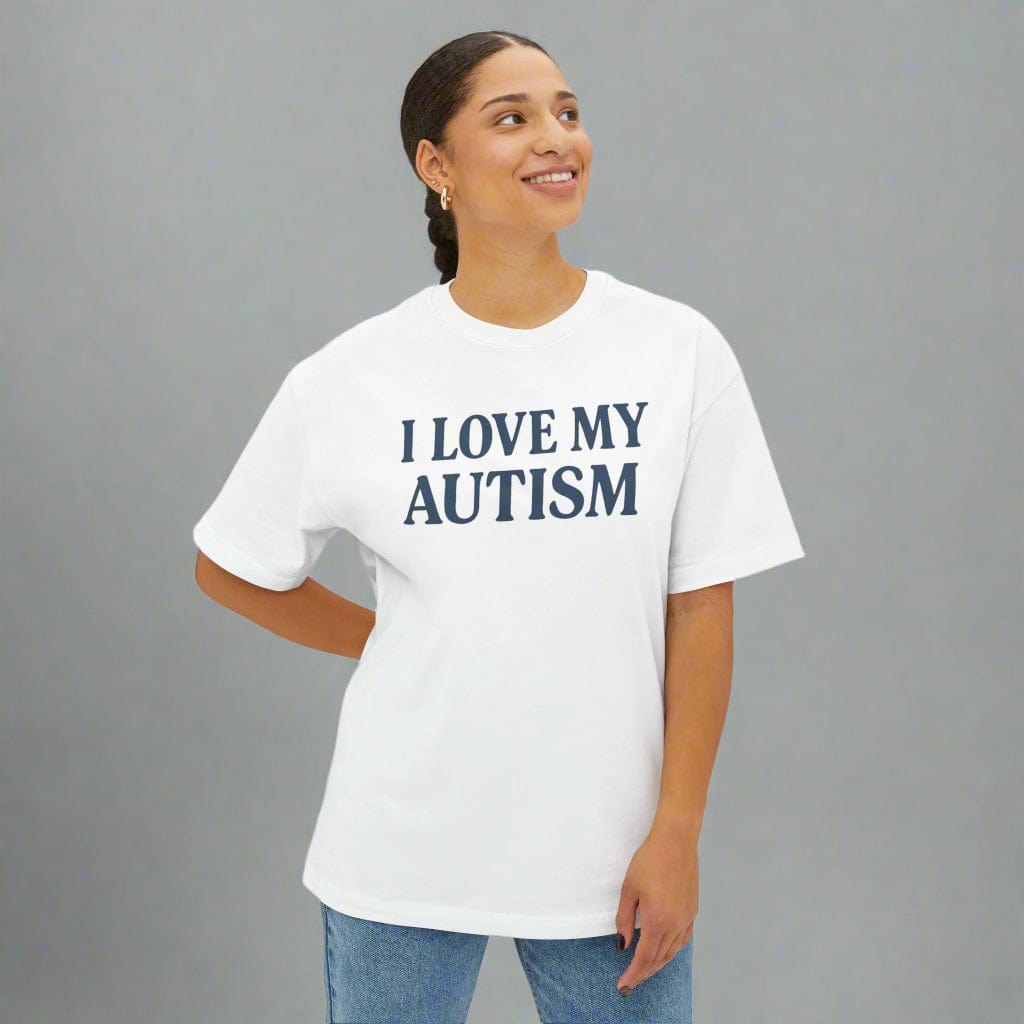ABA Therapy vs. Other Autism Interventions

Written by the HeyASD Editorial Team
Applied Behavior Analysis (ABA) therapy, a leading approach in autism treatment, focuses on intensive, personalized behavioral interventions. It is distinct in its development specifically for autism, offering a high level of customization and intensity compared to other therapies like occupational or speech therapy. This article explores the nuances of ABA therapy in contrast to other interventions, highlighting its unique aspects and integration with other therapeutic approaches.
Key Takeaways
- ABA therapy is uniquely designed for autism, focusing on intensive, personalized behavioral interventions.
- It differs from other therapies in intensity and approach, often requiring up to 40 hours a week.
- ABA can be integrated with other therapies like speech and occupational therapy, enhancing its effectiveness.
- It is considered the gold standard in autism treatments due to its specific focus and adaptability.
- Future directions in autism therapy may include innovations in ABA and combinations with other therapeutic techniques.
Understanding ABA Therapy
Core Principles of ABA
ABA therapy, or Applied Behavior Analysis, is a highly versatile and adaptive approach, focusing on teaching and enhancing specific behaviors through personalized evaluation. The core of ABA is its tailored approach to each individual, ensuring that every aspect of therapy is customized to meet the unique needs of the child. Techniques such as modeling, positive reinforcement, and discrete trial instruction are commonly employed to foster both functional and behavioral learning.
Effectiveness and Research
Research consistently supports the effectiveness of ABA therapy in promoting significant improvements in communication, social skills, and academic performance among individuals with autism. Studies highlight that early and intensive ABA interventions can lead to remarkable outcomes. However, the intensity and duration of therapy are crucial factors in determining its success, making it essential to adapt the therapy to the individual's developmental stage and learning pace.
Settings and Formats
ABA therapy can be conducted in various settings including at home, in school, or at specialized autism centers. This flexibility allows the therapy to be integrated seamlessly into the daily life of the individual. Whether it's a structured center-based program or a more fluid natural environment teaching setup, ABA adapts to the needs and comfort of the individual, making it a practical choice for many families. The ability to customize the setting and format of ABA therapy is a key advantage that facilitates consistent learning and development.
Comparative Analysis of ABA and Occupational Therapy
Differences in Approach
ABA (Applied Behavior Analysis) and occupational therapy (OT) both aim to support children with autism, but their approaches differ significantly. ABA focuses on modifying behavior through a structured program, emphasizing behavioral patterns and emotional regulation. In contrast, OT addresses daily living skills and sensory integration, using tools like social stories and visual scheduling to enhance functionality in everyday tasks.
Individualized Strategies
Both therapies are highly individualized, tailoring interventions to meet the unique needs of each child. The key to success in either therapy is the customization of strategies to address specific challenges and goals. This personalized approach ensures that interventions are relevant and effective, promoting significant improvements over time.
Outcome Expectations
While both therapies aim to improve quality of life, their outcome expectations differ. ABA often requires a more intensive time commitment, ranging from 10 to 40 hours per week, to see marked behavior changes. OT, on the other hand, may involve sessions from 30 minutes to an hour weekly, focusing more on enabling independence in daily activities and less on direct behavior modification.
The Intensity of ABA Therapy
Comparison with Other Therapies
ABA therapy stands out due to its high intensity compared to other autism interventions. While other therapies might involve weekly sessions, ABA often requires multiple sessions per week, if not daily engagement. This intensive approach is designed to immerse the child in a consistent, structured learning environment, which is crucial for effective intervention.
Time Commitment
The commitment to ABA therapy is substantial, with children typically needing 25 to 40 hours of therapy per week. This extensive time commitment underscores the therapy's intensive nature and its aim to produce significant improvements in behavior and learning skills. It's important to note that the effectiveness of ABA is closely tied to the consistency and frequency of the sessions.
Impact on Learning
The immersive and repetitive nature of ABA therapy helps reinforce learning and behavior modification more effectively. Children engaged in ABA often show marked improvements in cognitive and social skills, which are sustained over time. This is attributed to the intensive training and the tailored approach that ABA therapists use to meet each child's unique needs.
Customization in ABA Therapy
Tailoring to Individual Needs
ABA therapy's strength lies in its adaptability to the individual needs of each child. Every element of an ABA therapy treatment plan is customized to support the unique growth and development of the child. This personalized approach ensures that the therapy is relevant and effective, addressing specific challenges and leveraging strengths.
Integration with Other Therapies
ABA therapy is not a standalone solution; it often integrates seamlessly with other therapeutic approaches like occupational therapy (OT) and speech therapy. This integration enhances the overall effectiveness of the intervention, making it a versatile tool in the comprehensive care of children with autism.
Monitoring Progress
Continuous monitoring and adjustment of the therapy plan are crucial in ABA. This dynamic approach allows therapists to respond to the child's progress and evolving needs, ensuring that the therapy remains effective over time. Regular assessments help in fine-tuning the strategies to maximize developmental gains.
Specificity of ABA for Autism
Developmental Focus
ABA therapy is uniquely designed to meet the developmental needs of children with autism. It leverages an understanding of how these children perceive and interact with the world, making it highly effective for addressing specific challenges such as communication issues and repetitive behaviors.
Comparison with General Therapies
ABA therapy stands out due to its tailored approach for autism, unlike more general therapies that are not specifically designed for any one condition. This focus enhances the effectiveness of interventions and supports more meaningful progress in patients.
Success Rates
ABA therapy boasts high success rates in improving key life skills in children with autism. This is attributed to its intensive, personalized interventions that are based on continuous monitoring and adjustment. The success of ABA therapy is well-documented in numerous studies, highlighting its role as a leading treatment for autism spectrum disorders.
Key Differences from Other Autism Therapies
Methodology
ABA therapy is distinct in its structured and systematic approach, focusing heavily on behavior modification through reinforcement strategies. Unlike other therapies that may incorporate a broader spectrum of developmental skills, ABA is intensely focused on modifying specific behaviors.
Goals and Objectives
The primary goal of ABA therapy is to increase behaviors that are helpful and decrease behaviors that are harmful or affect learning. This contrasts with therapies that might prioritize sensory integration or social skills, making ABA unique in its targeted outcomes.
Parental Involvement
Parental involvement is crucial in ABA therapy. Parents are often trained to continue therapy techniques at home, which is less common in other forms of autism therapy. This hands-on approach not only empowers parents but also ensures consistency in the application of therapeutic principles.
ABA Therapy vs. Speech Therapy
Communication Focus
ABA therapy and speech therapy both aim to enhance communication skills in children with autism, but their approaches differ significantly. ABA focuses on behavior modification techniques to improve communication, while speech therapy directly addresses the mechanics of speech and language issues. Speech therapy is crucial for those who have specific speech impediments or language delays.
Frequency and Duration
The frequency and duration of these therapies can vary greatly. ABA therapy is known for its intensive schedule, often requiring multiple sessions per week, potentially totaling up to 40 hours. In contrast, speech therapy might only occur once a week but is intensely focused during that period. This difference in scheduling reflects the distinct goals and methods of each therapy type.
Therapeutic Techniques
ABA utilizes a variety of behavioral interventions to encourage desirable behaviors and reduce unwanted ones. Speech therapy, on the other hand, employs techniques like articulation therapy, language intervention activities, and oral-motor exercises. These methods are tailored to help children improve their pronunciation, enhance their understanding and use of language, and strengthen the muscles used in speech.
Both therapies are essential components of a comprehensive treatment plan for autism, each playing a unique role in a child's development.
Incorporating New Therapies with ABA
Art and Music Therapy
Integrating art and music therapy into ABA programs can enhance the sensory experience and emotional expression in children with autism. These therapies provide alternative avenues for communication and self-expression, often leading to breakthroughs in areas where traditional methods may falter.
Evaluating Effectiveness
It is crucial to regularly assess the effectiveness of combined therapies. This ensures that each component of the treatment plan is contributing positively to the child's development and allows for adjustments as needed.
Holistic Development
Incorporating a variety of therapeutic approaches, such as art, music, and other sensory-based therapies, supports a more holistic development of the child. This approach not only focuses on behavioral improvements but also enhances overall well-being and quality of life.
Practical Considerations in Choosing ABA
Cost Factors
When considering ABA therapy, the financial aspect cannot be overlooked. The cost of ABA can vary significantly depending on factors such as the provider's qualifications, the intensity of the program, and the location. It's crucial to explore various funding options, including insurance coverage, grants, and scholarships, to alleviate the financial burden.
Availability of Services
The availability of qualified ABA providers can greatly influence your decision. In some regions, there may be a shortage of certified behavior analysts, which can lead to long waiting lists. It's important to research local services early and consider the logistics of accessing these services, whether it's in-home, at a clinic, or through school programs.
Long-term Benefits
Choosing ABA therapy is an investment in the future. Studies show that early and intensive behavioral interventions can lead to significant improvements in long-term outcomes for many children with autism. Regular monitoring and adjustments by a qualified BCBA ensure that the therapy continues to meet the evolving needs of the child.
Role of ABA in Early Intervention
Importance of Early Start
Early intervention is crucial in maximizing the effectiveness of ABA therapy. Studies indicate that starting ABA therapy before the age of 5 significantly enhances cognitive and social development in children with autism. The earlier the intervention, the better the outcomes in terms of acquired skills and minimized developmental delays.
Adjustments for Older Children
While ABA is optimal for younger children, adjustments can be made for older children to ensure they also benefit from the therapy. Tailored strategies are developed to meet the specific needs of older children, focusing on more complex social interactions and self-care skills.
Long-term Outcomes
The long-term outcomes of early ABA intervention are promising. Children who receive ABA therapy at an early age often show improved communication skills, better academic performance, and more successful social interactions. These benefits are not only seen in childhood but can extend into adulthood, providing a foundation for a more independent life.
ABA therapy's role in early intervention is pivotal in setting the stage for lifelong learning and adaptation for children with autism.
Challenges and Criticisms of ABA Therapy
Controversies
ABA therapy has faced significant scrutiny over its methods. Critics argue that the therapy's focus on behavior modification can be too intense and may not adequately address the development of broader social and life skills. The historical use of punishments, although no longer practiced, still casts a long shadow over its reputation. This controversy continues to spark debate among parents, practitioners, and autism advocates.
Adaptability
One of the main criticisms of ABA is its perceived lack of adaptability in real-world scenarios. While ABA can be highly effective in controlled settings, the skills learned do not always transfer to new, unstructured environments. This has led to questions about the long-term effectiveness of ABA when compared to more holistic approaches that focus on a child's overall development and integration into society.
Family Dynamics
ABA's intensive nature can also strain family dynamics. The therapy often requires significant time commitment from parents, which can be challenging to manage alongside other responsibilities. Additionally, the emphasis on structured behavior modification techniques can sometimes lead to conflicts within the family, as not all members may agree with or understand the methods being used. Critics often highlight the need for therapies that consider the well-being of the entire family unit, not just the individual undergoing treatment.
Future Directions in Autism Therapies
Innovations in ABA
The landscape of Applied Behavior Analysis (ABA) is poised for transformative changes with emerging technologies and methodologies enhancing its effectiveness and reach. Innovative tools like virtual reality and AI-driven analytics are being integrated to create more engaging and personalized therapy sessions. This evolution promises to make ABA more accessible and tailored to the unique needs of each individual with autism.
Combining Therapies
The trend towards holistic approaches in autism therapy is gaining momentum. Combining ABA with other therapeutic strategies such as occupational therapy, speech therapy, and sensory integration is showing promising results in comprehensive developmental support. This integrated approach not only addresses a wider range of developmental needs but also enhances the overall effectiveness of the intervention strategies.
Predicting Therapy Trends
With the aid of big data and predictive analytics, the future of autism therapies looks to be more data-driven. By analyzing patterns and outcomes from numerous cases, experts can better predict which therapies will be most effective for specific symptoms or demographics. This precision in prediction will help in customizing interventions more accurately, ensuring that each individual receives the most beneficial treatment tailored to their specific condition.
Conclusion
In conclusion, while ABA therapy stands out as a highly intensive and customizable intervention specifically developed for children with autism, it is crucial to recognize the diversity of therapeutic options available. Each child with autism is unique, and what works for one might not work for another. Therefore, it is essential for parents and caregivers to explore all potential interventions, including occupational, speech, art, and music therapies, to tailor a comprehensive treatment plan that best meets the individual needs of their child. Understanding the specific characteristics and benefits of each therapy can empower families to make informed decisions that enhance the developmental journey of their child with autism.
Join Hundreds of Autistic Adults Feeling
More Comfort in Their Own Skin
Use code WELCOME10 for 10% off your first order.
Start Your Comfort JourneyFrequently Asked Questions
What is ABA therapy?
ABA (Applied Behavior Analysis) therapy is a popular approach in treating autism and other developmental disorders. It focuses on teaching and developing specific behaviors based on personalized evaluation and can be conducted in various settings, including at home or in a center, typically for up to 40 hours a week.
How does ABA therapy differ from other autism therapies in terms of intensity?
ABA therapy is more immersive and intensive compared to other autism therapies. While therapies like speech or occupational therapy might occur weekly for short sessions, ABA therapy involves up to 40 hours per week, providing a more concentrated approach.
Can ABA therapy be customized for each child?
Yes, ABA therapy can be tailored to meet the individual needs of each child with autism. It can be integrated with other therapies such as speech and occupational therapy, and adjusted based on the child's progress and specific requirements.
Why is ABA therapy considered the gold standard for autism?
ABA therapy is one of the few therapies developed specifically for children with autism, focusing on how they think, learn, and operate. Its effectiveness and intensive, personalized approach make it a gold standard in autism treatment.
What are the key differences between ABA therapy and occupational therapy?
ABA therapy and occupational therapy differ primarily in approach and strategy. ABA focuses on behavior management through consistent reinforcement, while occupational therapy often focuses on improving daily living skills and motor functions, each tailored to the child's needs.
What should parents consider when choosing between ABA therapy and other interventions?
Parents should consider the goals, intensity, and approaches of each therapy. Understanding each therapy's purpose and how it aligns with their child's needs is crucial. Consulting with professionals to get tailored advice is also recommended.
How does ABA therapy integrate with new therapies like art and music therapy?
ABA therapy can be effectively combined with newer therapies such as art and music therapy, which focus on different skill sets. This integration can help in holistic development by addressing various aspects of a child's growth and learning.
What is the role of ABA therapy in early intervention?
ABA therapy is highly effective when started early, ideally when children are younger than age 5. Early intervention can significantly impact the development of social, motor, verbal behaviors, and reasoning skills, and manage challenging behavior.
On This Page
Frequently asked questions
What are the main differences between ABA therapy and other autism interventions?
How can occupational therapy complement ABA therapy for a child with autism?
Why is early intervention important for children receiving ABA therapy?
How do sensory-friendly autism support strategies fit into ABA and other therapies?
Are there sensory tools or calming blankets that can help support children during ABA therapy sessions?
How can parents stay involved and support their child’s progress in ABA therapy?
What should families consider when comparing the intensity and time commitment of ABA therapy versus other interventions?
How do autism early intervention benefits influence long-term outcomes for children?
Can Autism-themed decor or comfortable clothing like t-shirts create a more supportive environment for children undergoing autism therapies?

About the HeyASD Editorial Team
Autistic‑owned • Values‑led • Sensory‑friendly design
We are autistic creators, writers, and advocates dedicated to producing resources that are practical, sensory-aware, and grounded in lived experience. Our mission is to make information and products that support the autistic community accessible to everyone, without jargon or condescension. Learn more about our team.
This article is written from lived autistic experience and an evidence-aware perspective. It is for general informational purposes only and should not be taken as medical, legal or therapeutic advice.
Always consult a qualified clinician or occupational therapist for individual needs and circumstances.

About Our Autism Blog
HeyASD isn’t just a store, it’s a calm, supportive space created by and for autistic adults. Our blog shares sensory-friendly tips, identity-affirming stories, and heartfelt resources for navigating life as an autistic person. Whether you're late-diagnosed, exploring your needs, or supporting someone you love, you're welcome here.
Thank you for reading. We hope these resources bring comfort and clarity.




































